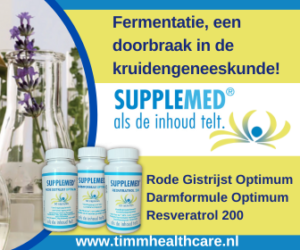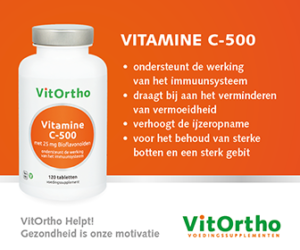Onze darmen produceren gassen met gunstige en minder gunstige effecten. Ze ontstaan uit spontane chemische reacties en vooral door de inwerking van bacteriën op voeding. Hoe hoger het gehalte aan verbeterbare vezels, hoe meer gassen.

De microbiota maakt talrijke vluchtige organische stoffen en gassen. Sommige daarvan dragen bij aan iemands’ karakteristieke lichaamsgeur. Ze geven ook informatie over infecties en ziektes van de luchtwegen, maagdarmsysteem en metabole ziektes zoals diabetes (1-3). De bekendste microbiële stoffen zijn de korteketenvetzuren. Deze zijn gunstig: ze vormen voeding voor de cellen van de dikke darm en fungeren als signaalstoffen in de microbioom-darm-hersen-as (1,4-8). Korteketenvetzuren ontstaan vooral uit vezels en meestal beschouwen we vezels daarom als ‘gezond’ (9,10). De antioxidant werking van het hierbij eveneens gemaakte waterstofgas is veel minder bekend (10-12c).
Bacteriën verteren in de dikke darm nagenoeg alle stoffen die we in de dunne darm niet opnemen. Onze voeding bepaalt in hoge mate de soorten bacteriën die in de dikke darm gaan groeien en daarmee ook welke gassen worden gemaakt (1). Ook verteren bacteriën (afval)producten van onszelf, zoals dode darmcellen die zijn afgestoten, spijsverteringsenzymen en het slijm (mucus) dat op de darmwand zit.
De darm bevat 30 tot 200 mL gas (1,13). Dit kan leiden tot een ‘opgeblazen gevoel’ en komt deels vrij als een ‘flatus’ of een ‘boer’. Gassen kunnen ook worden opgenomen in het bloed en verdwijnen dan via de ademhalingslucht of huid. Hoe meer fermenteerbaar materiaal in de voeding, hoe meer gas (11). Om een idee te krijgen: minder dan 300 mL bij een weinig fermenteerbare voeding (zoals een witte boterham) en 500-1.500 mL bij een hoog fermenteerbare voeding, zoals bonen (1).
Hoe meer fermenteerbaar materiaal in de voeding, hoe meer gas
De gemiddelde ‘wind’ van een gezonde persoon bevat vooral stikstof (N2; ongeveer 59 procent), waterstof (H2; 20,9 procent), kooldioxide (CO2; 9 procent), methaan (CH4; 7,2 procent), zuurstof (O2; 3,9 procent) en waterstofsulfide (‘rotte eieren gas’; H2S; 0,0003 procent). Stikstof en zuurstof komen voornamelijk van de ingeslikte lucht. CO2, waterstof en stikstof komen bij iedereen voor, zuurstof en H2S niet bij iedereen, en het methaangehalte wisselt sterk (0-30 procent) (1,14).
Waterstofgas opgelost in water staat in de schijnwerpers vanwege de vele gunstige effecten voor de gezondheid. Maar we beschikken dus ook over een natuurlijke bron. Het drinken van 300 mL melk levert een 18-82 keer hogere uitscheiding van waterstof in de ademhalingslucht dan het drinken van 300 mL water met waterstofgas (15). Dat geldt niet voor de meeste Nederlanders want die nemen de waterstofbron (lactose) grotendeels in hun dunne darm op (16). Ook opvallend: om onbekende reden stijgt het percentage mensen dat methaan produceert met de leeftijd van 5 procent (1-15 jaar) naar 57 procent (75+ jaar) (17). Methaan en H2S worden door micro-organismen gemaakt uit waterstofgas (18). Methaan remt de bewegelijkheid van de dikke darm en veroorzaakt daardoor obstipatie. Evenals andere zwavel-bevattende darmgassen heeft H2S een onaangename geur. Die zwavel stamt uit eiwit dat door ons niet volledig opgenomen is (1,19-25).
Symptomen van gasophoping in de darm lijken vooral op te treden bij mensen met het prikkelbare darmsyndroom en chronische inflammatoire darmziektes (ziekte van Crohn, colitis ulcerosa). Hierbij speelt overgevoeligheid (1,26,27) van de darm-hersen-as (26,28,29) waarschijnlijk de hoofdrol.
Beeld: Benny
1. Kalantar-Zadeh K, Berean KJ, Burgell RE, Muir JG, Gibson PR. Intestinal gases: influence on gut disorders and the role of dietary manipulations. Nat Rev Gastroenterol Hepatol. 2019 Dec;16(12):733-747. doi: 10.1038/s41575-019-0193-z. Epub 2019 Sep 13. PMID: 31520080.
https://pubmed.ncbi.nlm.nih.gov/31520080/
2. Belizário JE, Faintuch J, Malpartida MG. Breath Biopsy and Discovery of Exclusive Volatile Organic ompounds for Diagnosis of Infectious Diseases. Front Cell Infect Microbiol. 2021 Jan 7;10:564194. doi: 10.3389/fcimb.2020.564194. PMID: 33520731; PMCID: PMC7839533.
https://pubmed.ncbi.nlm.nih.gov/33520731/
3. Rondanelli M, Perdoni F, Infantino V, Faliva MA, Peroni G, Iannello G, Nichetti M, Alalwan TA, Perna S, Cocuzza C. Volatile Organic Compounds as Biomarkers of Gastrointestinal Diseases and Nutritional Status. J Anal Methods Chem. 2019 Sep 10;2019:7247802. doi: 10.1155/2019/7247802. PMID: 31583160; PMCID: PMC6754926.
https://pubmed.ncbi.nlm.nih.gov/31583160/
4. Fenske JD, Paulson SE. Human breath emissions of VOCs. J Air Waste Manag Assoc. 1999 May;49(5):594-8. doi: 10.1080/10473289.1999.10463831. PMID: 10352577.
https://pubmed.ncbi.nlm.nih.gov/10352577/
5 Probert CS. Role of faecal gas analysis for the diagnosis of IBD. Biochem Soc Trans. 2011 Aug;39(4):1079-80. doi: 10.1042/BST0391079. PMID: 21787351.
https://pubmed.ncbi.nlm.nih.gov/21787351/
624. Plöger S, Stumpff F, Penner GB, Schulzke JD, Gäbel G, Martens H, Shen Z, Günzel D, Aschenbach JR. Microbial butyrate and its role for barrier function in the gastrointestinal tract. Ann N Y Acad Sci. 2012 Jul;1258:52-9. doi: 10.1111/j.1749-6632.2012.06553.x. PMID: 22731715.
https://pubmed.ncbi.nlm.nih.gov/22731715/
6a25. Silva YP, Bernardi A, Frozza RL. The Role of Short-Chain Fatty Acids From Gut Microbiota in Gut-Brain Communication. Front Endocrinol (Lausanne). 2020 Jan 31;11:25. doi: 10.3389/fendo.2020.00025. PMID: 32082260; PMCID: PMC7005631.
https://pubmed.ncbi.nlm.nih.gov/32082260/
7. Lee JH, Zhu J. Analyses of short-chain fatty acids and exhaled breath volatiles in dietary intervention trials for metabolic diseases. Exp Biol Med (Maywood). 2021 Apr;246(7):778-789. doi: 10.1177/1535370220979952. Epub 2020 Dec 16. PMID: 33327781; PMCID: PMC8719028.
https://pubmed.ncbi.nlm.nih.gov/33327781/
8. Guo C, Huo YJ, Li Y, Han Y, Zhou D. Gut-brain axis: Focus on gut metabolites short-chain fatty acids. World J Clin Cases. 2022 Feb 26;10(6):1754-1763. doi: 10.12998/wjcc.v10.i6.1754. PMID: 35317140; PMCID: PMC8891794.
https://pubmed.ncbi.nlm.nih.gov/35317140/
9. Baxter NT, Schmidt AW, Venkataraman A, Kim KS, Waldron C, Schmidt TM. Dynamics of Human Gut Microbiota and Short-Chain Fatty Acids in Response to Dietary Interventions with Three Fermentable Fibers. mBio. 2019 Jan 29;10(1):e02566-18. doi: 10.1128/mBio.02566-18. PMID: 30696735; PMCID: PMC6355990.
https://pubmed.ncbi.nlm.nih.gov/30696735/
10. Portincasa P, Bonfrate L, Vacca M, De Angelis M, Farella I, Lanza E, Khalil M, Wang DQ, Sperandio M, Di Ciaula A. Gut Microbiota and Short Chain Fatty Acids: Implications in Glucose Homeostasis. Int J Mol Sci. 2022 Jan 20;23(3):1105. doi: 10.3390/ijms23031105. PMID: 35163038; PMCID: PMC8835596.
https://pubmed.ncbi.nlm.nih.gov/35163038/
11. Modesto A, Cameron NR, Varghese C, Peters N, Stokes B, Phillips A, Bissett I, O’Grady G. Meta-Analysis of the Composition of Human Intestinal Gases. Dig Dis Sci. 2021 Oct 8. doi: 10.1007/s10620-021-07254-1. Epub ahead of print. PMID: 34623578.
https://pubmed.ncbi.nlm.nih.gov/34623578/
12. Ohta S. Molecular hydrogen as a novel antioxidant: overview of the advantages of hydrogen for medical applications. Methods Enzymol. 2015;555:289-317. doi: 10.1016/bs.mie.2014.11.038. Epub 2015 Jan 21. PMID: 25747486.
https://pubmed.ncbi.nlm.nih.gov/25747486/
12a. Dixon BJ, Tang J, Zhang JH. The evolution of molecular hydrogen: a noteworthy potential therapy with clinical significance. Med Gas Res. 2013 May 16;3(1):10. doi: 10.1186/2045-9912-3-10. PMID: 23680032; PMCID: PMC3660246.
https://pubmed.ncbi.nlm.nih.gov/23680032/
12b. Li S, Liao R, Sheng X, Luo X, Zhang X, Wen X, Zhou J, Peng K. Hydrogen Gas in Cancer Treatment. Front Oncol. 2019 Aug 6;9:696. doi: 10.3389/fonc.2019.00696. PMID: 31448225; PMCID: PMC6691140.
https://pubmed.ncbi.nlm.nih.gov/31448225/
12c. Yamamoto R, Homma K, Suzuki S, Sano M, Sasaki J. Hydrogen gas distribution in organs after inhalation: Real-time monitoring of tissue hydrogen concentration in rat. Sci Rep. 2019 Feb 4;9(1):1255. doi: 10.1038/s41598-018-38180-4. PMID: 30718910; PMCID: PMC6362202.
https://pubmed.ncbi.nlm.nih.gov/30718910/
13. Levitt MD. Volume and composition of human intestinal gas determined by means of an intestinal washout technic. N Engl J Med. 1971 Jun 24;284(25):1394-8. doi: 10.1056/NEJM197106242842502. PMID: 5578321.
https://pubmed.ncbi.nlm.nih.gov/5578321/
14. Freire R, Mego M, Oliveira LF, Mas S, Azpiroz F, Marco S, Pardo A. Quantitative GC-TCD Measurements of Major Flatus Components: A Preliminary Analysis of the Diet Effect. Sensors (Basel). 2022 Jan 22;22(3):838. doi: 10.3390/s22030838. PMID: 35161583; PMCID: PMC8840200.
https://pubmed.ncbi.nlm.nih.gov/35161583/
15. Shimouchi A, Nose K, Yamaguchi M, Ishiguro H, Kondo T. Breath hydrogen produced by ingestion of commercial hydrogen water and milk. Biomark Insights. 2009 Feb 9;4:27-32. doi: 10.4137/bmi.s2209. PMID: 19652760; PMCID: PMC2716677.
https://pubmed.ncbi.nlm.nih.gov/19652760/
16. Ségurel L, Bon C. On the Evolution of Lactase Persistence in Humans. Annu Rev Genomics Hum Genet. 2017 Aug 31;18:297-319. doi: 10.1146/annurev-genom-091416-035340. Epub 2017 Apr 19. PMID: 28426286.
https://pubmed.ncbi.nlm.nih.gov/28426286/
17. Polag D, Leiß O, Keppler F. Age dependent breath methane in the German population. Sci Total Environ. 2014 May 15;481:582-7. doi: 10.1016/j.scitotenv.2014.02.086. Epub 2014 Mar 12. PMID: 24631621.
https://pubmed.ncbi.nlm.nih.gov/24631621/
18. .Hylemon PB, Harris SC, Ridlon JM. Metabolism of hydrogen gases and bile acids in the gut microbiome. FEBS Lett. 2018 Jun;592(12):2070-2082. doi: 10.1002/1873-3468.13064. Epub 2018 May 7. PMID: 29683480.
https://pubmed.ncbi.nlm.nih.gov/29683480/
19. Mustafa AK, Gadalla MM, Snyder SH. Signaling by gasotransmitters. Sci Signal. 2009 Apr 28;2(68):re2. doi: 10.1126/scisignal.268re2. PMID: 19401594; PMCID: PMC2744355.
https://pubmed.ncbi.nlm.nih.gov/19401594/
19a. Sahakian AB, Jee SR, Pimentel M. Methane and the gastrointestinal tract. Dig Dis Sci. 2010 Aug;55(8):2135-43. doi: 10.1007/s10620-009-1012-0. Epub 2009 Oct 15. PMID: 19830557.
https://pubmed.ncbi.nlm.nih.gov/19830557/
20. Wang R. Gasotransmitters: growing pains and joys. Trends Biochem Sci. 2014 May;39(5):227-32. doi: 10.1016/j.tibs.2014.03.003. Epub 2014 Apr 22. PMID: 24767680.
https://pubmed.ncbi.nlm.nih.gov/24767680/
21. Perridon BW, Leuvenink HG, Hillebrands JL, van Goor H, Bos EM. The role of hydrogen sulfide in aging and age-related pathologies. Aging (Albany NY). 2016 Sep 27;8(10):2264-2289. doi: 10.18632/aging.101026. PMID: 27683311; PMCID: PMC5115888.
https://pubmed.ncbi.nlm.nih.gov/27683311/
22. Shefa U, Yeo SG, Kim MS, Song IO, Jung J, Jeong NY, Huh Y. Role of Gasotransmitters in Oxidative Stresses, Neuroinflammation, and Neuronal Repair. Biomed Res Int. 2017;2017:1689341. doi: 10.1155/2017/1689341. Epub 2017 Mar 12. PMID: 28386548; PMCID: PMC5366188.
https://pubmed.ncbi.nlm.nih.gov/28386548/
23. Wareham LK, Southam HM, Poole RK. Do nitric oxide, carbon monoxide and hydrogen sulfide really qualify as ‘gasotransmitters’ in bacteria? Biochem Soc Trans. 2018 Oct 19;46(5):1107-1118. doi: 10.1042/BST20170311. Epub 2018 Sep 6. PMID: 30190328; PMCID: PMC6195638.
https://pubmed.ncbi.nlm.nih.gov/30190328/
24. Hendriks KD, Maassen H, van Dijk PR, Henning RH, van Goor H, Hillebrands JL. Gasotransmitters in health and disease: a mitochondria-centered view. Curr Opin Pharmacol. 2019 Apr;45:87-93. doi: 10.1016/j.coph.2019.07.001. Epub 2019 Jul 17. PMID: 31325730.
https://pubmed.ncbi.nlm.nih.gov/31325730/
25. United States Department of labor. Occupational Safety and Health Administration. Hydrogen Sulfide; accessed 19 04 2022
https://www.osha.gov/hydrogen-sulfide/hazards
26. Kennedy PJ, Cryan JF, Dinan TG, Clarke G. Irritable bowel syndrome: a microbiome-gut-brain axis disorder? World J Gastroenterol. 2014 Oct 21;20(39):14105-25. doi: 10.3748/wjg.v20.i39.14105. PMID: 25339800; PMCID: PMC4202342.
https://pubmed.ncbi.nlm.nih.gov/25339800/
27. Major G, Pritchard S, Murray K, Alappadan JP, Hoad CL, Marciani L, Gowland P, Spiller R. Colon Hypersensitivity to Distension, Rather Than Excessive Gas Production, Produces Carbohydrate-Related Symptoms in Individuals With Irritable Bowel Syndrome. Gastroenterology. 2017 Jan;152(1):124-133.e2. doi: 10.1053/j.gastro.2016.09.062. Epub 2016 Oct 14. PMID: 27746233.
https://pubmed.ncbi.nlm.nih.gov/27746233/
28. Stanley S, Wynne K, McGowan B, Bloom S. Hormonal regulation of food intake. Physiol Rev. 2005 Oct;85(4):1131-58. doi: 10.1152/physrev.00015.2004. PMID: 16183909.
https://pubmed.ncbi.nlm.nih.gov/16183909/
29. Clemmensen C, Müller TD, Woods SC, Berthoud HR, Seeley RJ, Tschöp MH. Gut-Brain Cross-Talk in Metabolic Control. Cell. 2017 Feb 23;168(5):758-774. doi: 10.1016/j.cell.2017.01.025. PMID: 28235194; PMCID: PMC5839146.
MMV maakt wekelijks een selectie uit het nieuws over voeding en leefstijl in relatie tot kanker en andere medische condities.
Inschrijven nieuwsbrief








